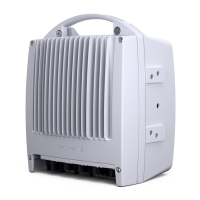
Do you have a question about the Ericsson MINI-LINK E and is the answer not in the manual?
| Brand | Ericsson |
|---|---|
| Model | MINI-LINK E |
| Category | Transmitter |
| Language | English |
General overview of MINI-LINK E and E Micro product families.
Key technical characteristics of MINI-LINK products.
Features contributing to the reliability of MINI-LINK systems.
Describes the outdoor and indoor parts of a MINI-LINK E terminal.
Details on how MINI-LINK E radio units and antennas are installed outdoors.
Explains the installation of indoor parts like AMMs and plug-in units.
Configuration for a basic, unprotected MINI-LINK E terminal.
Configuration for protected MINI-LINK E terminals with 1+1 redundancy.
Describes configurations for sites with multiple MINI-LINK E terminals.
Configuration details for repeater sites using MINI-LINK E.
Using ETU for Ethernet traffic transmission with MINI-LINK E.
Configuration options for MINI-LINK E Micro terminals.
Information on RAU1 and RAU2 radio units for MINI-LINK E.
Block diagram of the RAU1 7-E and 8-E radio unit.
Functional description of the microwave sub-unit in RAU1.
Block diagram of RAU1 (15-E to 38-E) units.
Functions of the radio interface sub-unit in RAU1.
Components of the transmitter block in RAU1's microwave sub-unit.
Block diagram of the RAU2 radio unit.
Description of the microwave unit in RAU2.
Information about Access Module Magazines (AMM) types.
Functional blocks included in the MMU.
Detailed functional description of the MMU.
Features of the integrated Control and Supervision System (CSS).
List and description of transmitter and receiver alarms for MINI-LINK E.